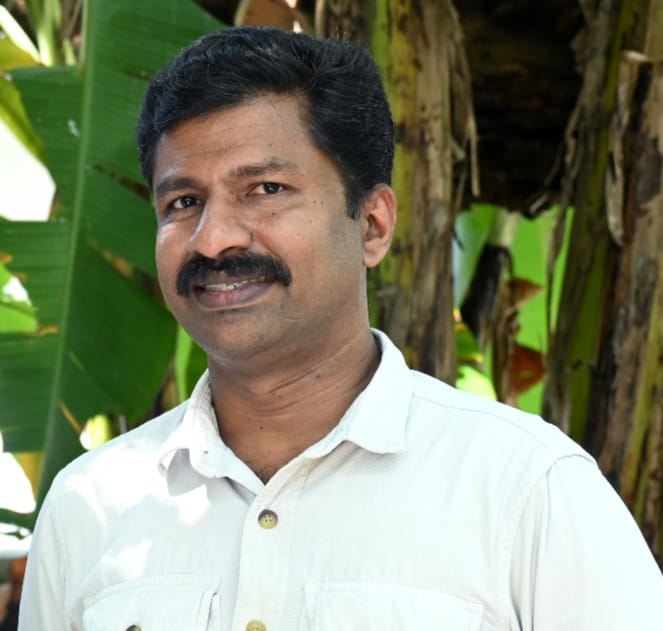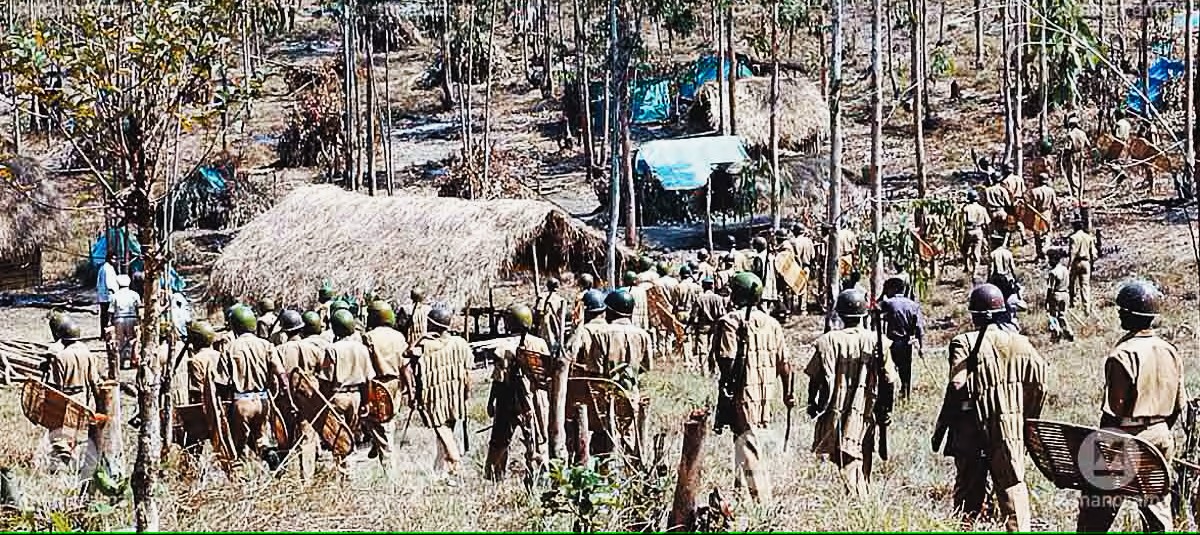
Muthanga: A Struggle Born of Decades of Betrayal
Muthanga land agitation at Wayanad district of Kerala was not a chance event. It was the result of years of betrayal and neglect by governments towards the tribal community. The Tribal Mission, formed by the Antony government following the ‘kudilketty’ (hut-building) agitation, failed to materialise due to the vested interests of political parties and leaders. M Geethanandan, who was a leader alongside C K Janu in the Muthanga agitation, explains how the general public and state machinery collectively turned against the Adivasis. The fact that Adivasi communities across the globe face similar treatment from the state and the public at large is revealed here. This is the first part of a long interview.
Can you explain how the Muthanga protest for Adivasi self-governance began, and what its goals were?
Before we examine the Muthanga protest, it’s important to look back at the events that led up to it. At the centre of this history is the public activism of CK Janu. To put it briefly, the Muthanga protest was made possible by a series of agitations that began in Kerala in 1995.
By around 1996, CK Janu began receiving support from Dalit groups. The land occupation protest that took place in 1998 at Thiruvonappuram in Kannur district is particularly significant. It was initially started by people from the old Naxalite movement. When they were no longer in a position to take it forward, Janu stepped in. At the time, I had formed a movement called the All Kerala Dalit Liberation Front and was actively involved.
When the police evicted the protestors from the occupied land, a new protest was launched in front of the Kannur Collectorate under the leadership of Chandran Moopan. That protest received strong public support. Later, both Janu and I stepped in to lead it.
At that point, Janu’s Adivasi Coordination Committee was inactive. So, we formed a new platform called the Adivasi-Dalit Action Committee. I became its general convener, and Janu was the chairperson. That was also when Sunny Kapikkad began his activism. Several radical groups from Kerala joined this platform.
Within one and a half months at Thiruvonappuram, the protest succeeded in securing title deeds of half an acre of land for each family. That victory energised the Adivasi movement in Malabar. One of its outcomes was the Aralam Farm protest.
Another important protest led by CK Janu was the land struggle at Panavalli, in Wayanad District of Kerala. There, Adivasis were facing eviction threats from the protest site. We opposed that as well. After that, several other protests took place in different parts of Kerala—many of them against forced evictions.
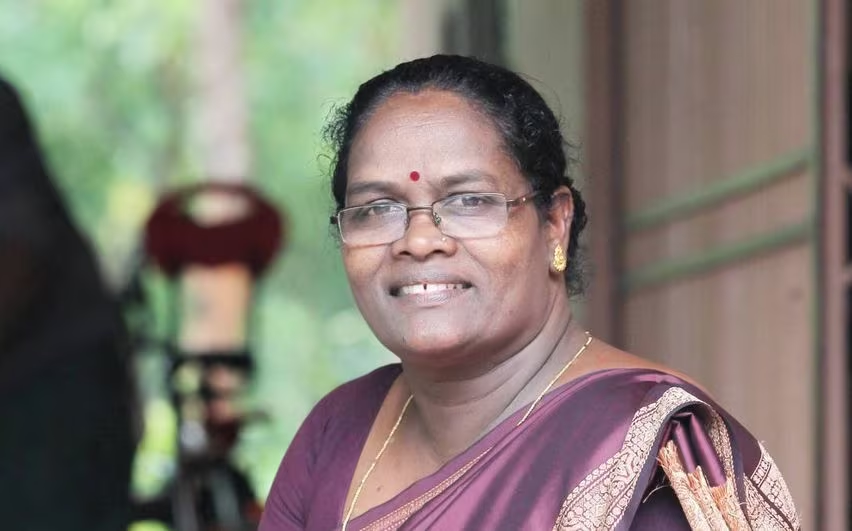
One such protest worth highlighting happened at Kundala in Wayanad. The LDF government attempted to take over nearly 700 acres of Adivasi land for a self-financed engineering college. The Adivasi-Dalit Action Committee intervened in that eviction issue. Both of us and the Adivasis were violently attacked. I think it was around 2001, just before the state assembly elections. PJ Joseph was the Education Minister, and Alphons Kannanthanam was the Higher Education Secretary. At the time, Kannanthanam was full of the arrogance he’d earned from demolishing buildings in Delhi. The land was taken under his aggressive insistence. The area in question was near the Mattupetty Dam.
As the elections approached, Janu began a hunger strike in PJ Joseph’s constituency. PT Thomas was the opposition candidate. After a week of protest, Alphons Kannanthanam came for negotiations. An agreement was reached: the occupied land would be returned, the Adivasis would be resettled, cases would be withdrawn, and compensation would be provided. At that time, Adivasis only had community rights, not legal land titles. It was decided that each family would receive five acres. Around 68 families eventually got title deeds.
Similarly, there was a major protest at Thuvayippathi near Anakkatti, along the Tamil Nadu border. Following the model of Kundala, the Tamil Nadu government carried out evictions there for a proposed zoological park. Arrests followed the protest. C R Bijoy and others supported this struggle. These events took place between 1999 and 2000.
Another major protest followed the self-immolation of a Dalit man named Sreedharan in Kurichiyil. The Adivasi-Dalit Action Committee was involved in this too. The protest lasted about one and a half years. It was against the installation of a high-tension (HT) power line through a colony with a very narrow pathway. The demand was that the line not be routed through the area for the benefit of a plywood factory. K Radhakrishnan was the Minister for Scheduled Castes and Tribes, and Nayanar was the Chief Minister. Even after approaching the court, the community didn’t get a stay. The collector arrived with police to charge the line. In protest, people poured kerosene on themselves. One man set himself on fire. This happened the day after the Thiruvonappuram protest ended. The Adivasi-Dalit Action Committee intervened and reframed it as a protest of self-respect. The main demand was to remove the HT line. A large rally was organised. Eventually, the government gave in. Many people were arrested and beaten. To get the cases withdrawn, 25 people went on a hunger strike until death. On the fourth day, a settlement was reached. While Janu wasn’t deeply involved in this one, it was still a major protest with strong participation from the Adivasi-Dalit Action Committee.
By 2000, these protests had succeeded in building a large group of young people who supported CK Janu. MB Manoj, who is now a professor at Calicut University, and the late KP Sasi were among them. A statewide network began to take shape. It was on this foundation that the “kudilketty’ (hut-building) agitation in Thiruvananthapuram began in 2001.
The immediate triggers for the protest were hunger and poverty in Adivasi villages. In southern Kerala, there was a widespread campaign to forcibly enrol Adivasi children into hostels and use them to maintain student numbers in aided schools. The hostel lobby was very powerful. During this time, a girl who had been sexually assaulted died in a hostel in Kottarakkara. That incident caused a major outcry. Around the same time, a meeting was being held in Kottarakkara demanding the closure of these hostels. It was there that the decision was made to protest in Thiruvananthapuram against starvation deaths.
On August 9, 126 people arrived in Thiruvananthapuram. A memorandum was prepared, and that’s how the idea of a “refugee camp” was born. The protest was framed as a cultural struggle by people rendered refugees in their own land. The ‘refugee huts’ were set up in front of the Secretariat in Thiruvananthapuram. MB Manoj and others submitted the memorandum to Chief Minister AK Antony. Antony found the letter deeply moving and responded, “I want to do something, but I need some time.”
A group of protesters then set up huts in front of Cliff House (the CM’s residence). At the time, Rs 8 crore had been allocated for Onam celebrations. The protesters declared that this was a wasteful extravagance, and warned that if the Adivasi protest was not resolved, they would block the Onam festivities.
The initial round of negotiations failed. That’s when the media began paying attention. We announced that we would block the Onam rally at Kowdiar. This drew major attention. When we disrupted the rally, police arrested CK Janu.
Following her arrest, media coverage intensified. People from Attappady, Nelliyampathy, and other places came to join the protest. Around 1,000 people gathered. The junction near the Devaswom Board also filled up with ‘refugee huts.’ Efforts were made to demolish the huts using High Court orders, barbed wire, and other tactics. Justice V.R. Krishna Iyer intervened. On October 8, a large rally was held, starting from Kowdiar, with nearly 10,000 participants. At Nandavanam Open Auditorium, around 60 tribal elders (mooppanmar) assembled and formed the Adivasi Council. At this gathering, they announced a new platform—Gotra Mahasabha (Grand Tribal Assembly). From there on, the idea of Gotra Mahasabha gained clarity. The vision of strengthening oorus (tribal villages) began to take shape. After that, the issue of implementing PESA (Panchayats Extension to Scheduled Areas Act) was raised.
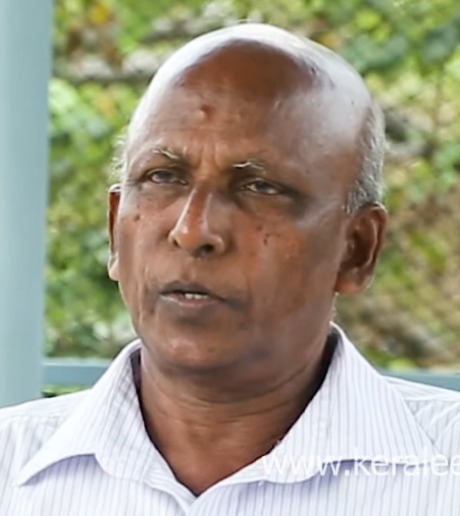
Just as she had supported the issue of the 1975 Act, K R Gouri Amma,then Minister of social welfare and agriculture took a very favourable stance toward this protest as well. She held multiple discussions with various stakeholders. But the SC/ST Welfare Minister at the time, M.A. Kuttappan, was not supportive. In the Chief Minister’s office, a secretary named Gopinathan Nair stood with us, asserting that our demands were justified—even as a large section of the bureaucracy opposed us. R. Ramkumar, who was then Revenue Secretary and later a High Court judge, was not against the protest either. Finance Secretary Vijayanand issued a government order to strengthen oorukoottams (village assemblies). One of the key demands of the protest was to address misuse of funds at the bureaucratic level. We argued that implementing PESA would mean funds could go directly to the panchayat and not be filtered through bureaucratic channels.
One of the key demands was that land rightfully belonging to Adivasis should be granted to them. The Madhav Menon report recommended allocating 24,000 hectares of vested forest land in Wayanad alone. There were also demands to dismantle the Sugandhagiri and Pookode projects, to allot five acres of land to all landless individuals, and to withdraw the case in the Supreme Court regarding recovery of encroached land. The government couldn’t outright reject these demands. Another major demand was the implementation of the PESA Act (Panchayats Extension to Scheduled Areas).
By around 24 October, the government verbally agreed to allocate 45,000 acres. A framework for this was drawn up. We started to feel that the land issue would be resolved. So our focus shifted to topics like implementing PESA and self-governance in Adivasi villages.
Kayamkulam Prasad, a former Naxalite, explained the importance of PESA to Gowri Amma, who had a great fondness for Janu and maintained an open-minded approach. By 16 October 2001, there was a consensus that the protest could be called off. A meeting was held the previous day, and a draft agreement was discussed. I was there along with Janu, CR Bijoy, and Sunny Kapikkad.
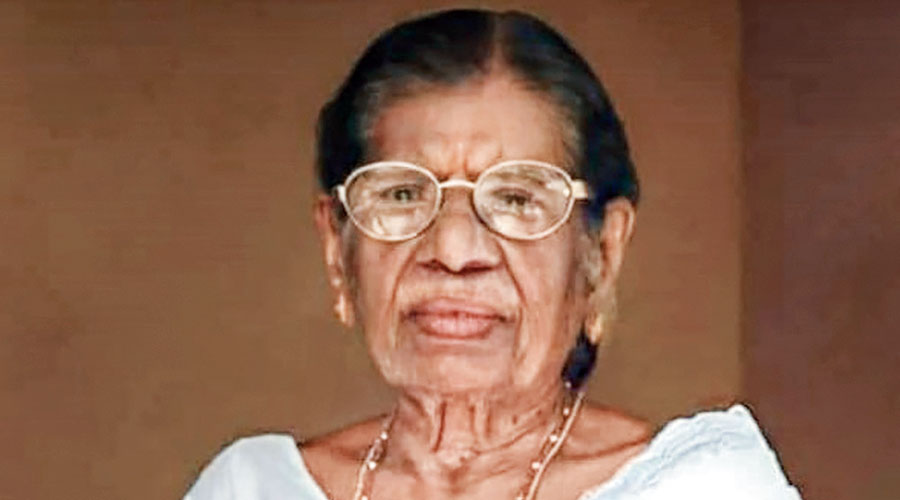
The agreement was to be implemented from 1 January 2002. A Tribal Resettlement and Development Mission was formed. Land would be provided–ranging from one to five acres–based on availability. The Sugandhagiri and Pookode projects would be dismantled, and up to five acres would be distributed. That was the main agreement.
Furthermore, development work would be undertaken only with the consent of the Adivasi village assemblies. Financial assistance would be provided to make the land cultivable and ensure self-sufficiency. The current land, and any new allocations, would be included in the Fifth Schedule and governed under the PESA Act. In areas like Wayanad–where Adivasi populations are high and revenue land is limited–vested forest land would be identified and distributed with the central government’s permission. The case in the Supreme Court would be respected and handled accordingly. These were the terms of the agreement.
However, the government did not agree to withdraw the case in the Supreme Court. To implement the agreement, the Tribal Mission was formed on 1 January 2002, chaired by the Chief Minister. A document outlining the Comprehensive Resettlement Plan was released.
Each district had an estimate of available land. When a master plan for land distribution was proposed, political parties began to panic. It became a headache for many in the bureaucracy. Not everyone was willing to release revenue land. Many strong lobbies resisted. That’s how it became a contentious issue in Idukki. The Mathikettan controversy broke out in April 2002. K Sudhakaran was the Forest Minister at the time. One could say that the Mathikettan controversy marked the beginning of the events that led to the Muthanga police firing.
Idukki district had the largest land allocation in the Master Plan document. In Mankulam alone, 25,000 acres were identified. In Mathikettan, 2,200 acres of shola forests were marked. Along with areas like Kundala, Pooppara, and Chinnakkanal, the mission identified around 50,000 acres of land. P Sivanandan was the mission chief, and Madhav Menon was appointed chairperson on our recommendation. The mission had an office with 30 officials. The government allocated Rs 100 crore to the mission. The beginning was quite promising. Vijay Anand retracted Rs 58 crore (if memory serves right) from funds previously given to panchayats for Adivasi development. Both major parties opposed this move. The issue was that control was shifting out of their hands. The then KPCC President Muraleedharan was among those who strongly opposed it. In protest, Thomas Isaac staged a sit-in at the Secretariat, calling the fund retraction illegal. But in truth, it wasn’t.
The second objection was to the order requiring consultation with oorukoottams (Adivasi village assemblies) during the land distribution process–deciding who gets what land. This order was issued by Vijay Anand. Politicians feared they were losing their grip. Empowering village assemblies has always been a concern for them. That’s when the CPI(M) formed the Adivasi Kshema Samithi (AKS) as a counter-organisation. The growth of Gothra Mahasabha had worried them. So they organised a parallel protest. The Forest Department had prepared a list of vested forest land meant to be given to Adivasis. That list was leaked to them by insiders in the department.
In April 2002, the Antony-led Kerala government submitted a proposal to the Vajpayee government to hand over 30,000 acres of vested forest land to Adivasis. Using that leaked list, AKS led land occupations in Wayanad. They called it the “Fill the Jails” protest. It was MA Kuttappan and K Sudhakaran who went to negotiate an end to the protest. Around the same time, the Mathikettan land issue was active.
There was confusion about whether the Mathikettan land belonged to the Revenue Department or the Forest Department–a recurring issue in many places. This ambiguity was often used to enable private encroachments. What we saw there were cardamom estates held by people connected to KM Mani and others. Around 2,200 acres had already been encroached upon with the knowledge of officials in both departments. Journalist PK Prakash broke the story. The situation escalated after we sent a letter demanding that everyone except the Adivasis be evicted. VS Achuthanandan visited Mathikettan. A court was even set up in Mananthavady to prosecute the Forest Department. That incident provoked Sudhakaran.
Why did the Tribal Mission lose momentum?
K Sudhakaran and MA Kuttappan together prepared a report to dismantle the Tribal Mission. They were determined to bring it down. However, the chief of the Tribal Mission was supportive of us. AKS (Adivasi Kshema Samithi) demanded the withdrawal of Vijay Anand’s order that recognised the rights of oorukoottams (Adivasi village assemblies), and Kuttappan and Sudhakaran worked together to overturn it. Then, a new order was issued, stating that MPs and MLAs must be included in the oorukoottams. Eventually, the Mathikettan Hills were declared a national park.
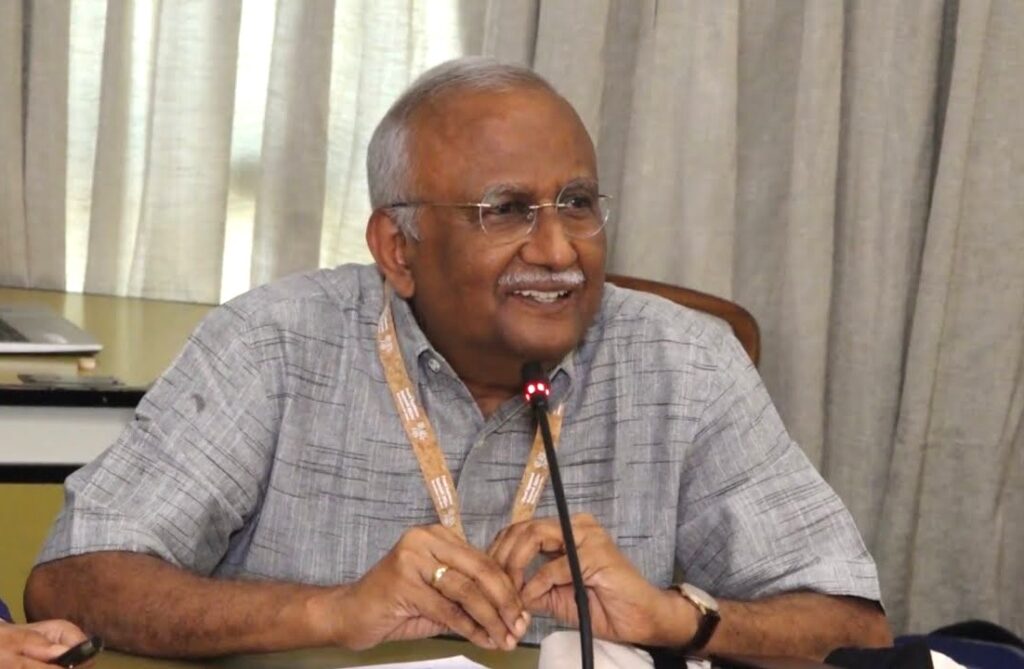
It was when it became evident that the Forest and Revenue Departments were working together to sabotage the Tribal Mission that the Muthanga protest erupted.
There was a deliberate plan–by a faction within the Congress party and some sections of the Left–to dismantle the Adivasi Gothra Mahasabha. Oommen Chandy, K Muraleedharan, and Sudhakaran were all united in this effort. They even got MA Kuttappan to write a note saying the Rehabilitation Mission was unnecessary.
MA Kuttappan was seen as a stooge of the Christian business lobby, which had various vested interests. There was also a misconception that the Tribal Mission operated outside the purview of the Scheduled Caste Department.
Even AK Antony was unsure whether the Mission could be effectively run. It was in this context that a land rights padayatra (march) was organised ahead of Muthanga, presenting the issue as one of rightful Adivasi land ownership. Around November 2002, another protest began in Kannur to reclaim the Aralam Farm.
What was the response of the Adivasi Gothra Mahasabha in this situation?
The Adivasi Gothra Mahasabha decided to launch a large-scale movement that combined the demand for land with the demand for Adivasi self-rule. The Tribal Mission had nearly come to a standstill. AK Antony was in a state of complete inaction. We had lost all influence in MA Kuttappan’s office.
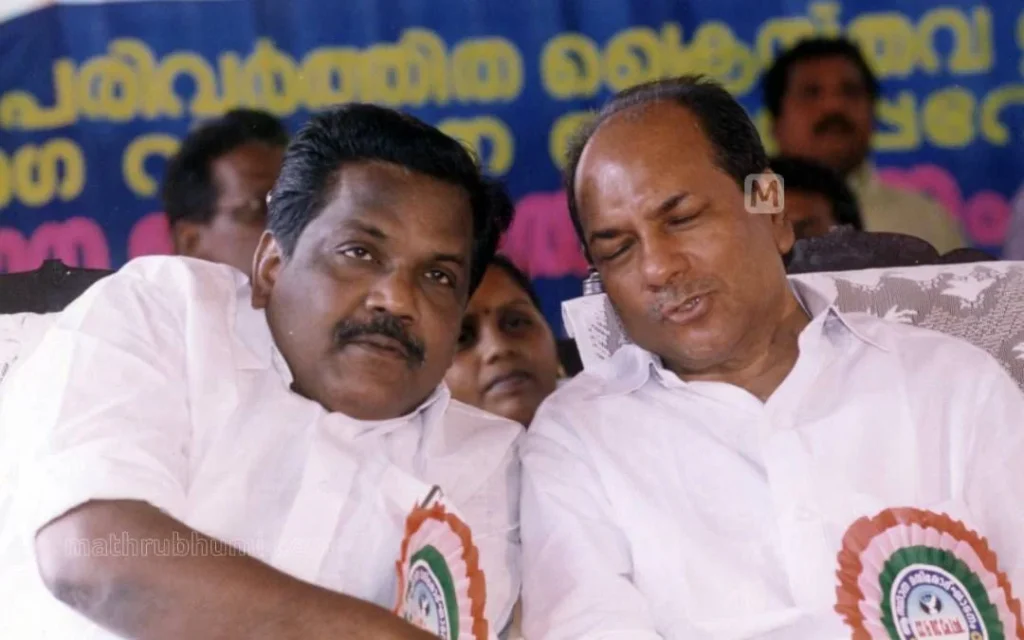
So, the plan was to occupy land in three key locations in Kerala. A few sites in Wayanad had already been identified. One was Mariyanad, the very place where the current land protest is happening. Another was Aralam Farm. The third was a site in Kollam district, where activists like Lah Gopalan had previously led agitations. Surveys had been conducted in all these places.
But it was decided that it would be difficult to carry out coordinated protests in all locations at once. So Muthanga alone was chosen as the protest site. One of the goals was to establish a village that could come under the purview of the PESA Act (Panchayats Extension to Scheduled Areas Act).
Another factor was Madhav Menon’s master plan, which had completely excluded PESA. A letter had been sent to the central government from the Tribal Mission without any consultation with the Adivasi Gothra Mahasabha. It was not approved, but even then, PESA was not included in the revised master plan. This too contributed to the decision to move forward with the Muthanga protest.
There was strong resistance from senior forest officials and the Forest Minister. The Mathikettan issue had provoked both Sudhakaran and late KM Mani. Although newspapers portrayed it as an internal conflict between them, it was actually fuelled by the demands of Adivasi communities. We had also demanded the removal of two DFOs (Divisional Forest Officers) who had been working against us.
Can you describe the preparations made for the Muthanga protest?
The decision to go to Muthanga was made in November 2002. On November 24, an Adivasi gathering was held in Aralam. Around that time, political parties began declaring that they would not allow CK Janu to enter Aralam. Organising a protest to reclaim Aralam Farm required significant effort. The land was under the control of a public sector enterprise called the Central State Farming Corporation of India.
Earlier, around 12,000 acres had come into the hands of an individual named Kunji Mayeen Haji. When the government later sought land to start a farm, this area was acquired. Of the total, 7,000 acres were purchased at market value and 5,000 acres were categorised as forest land. In 1975, with support from the Russian government, the farm was developed into a large agricultural enterprise. It produced cocoa, rubber, and coffee.
Over time, the farm deteriorated due to mismanagement. At that time, Gowri Amma was the Minister for Agriculture. When officials realised the urgency of the Adivasi land issue, they asked the minister whether the land could be allocated for Adivasi resettlement. It was Dr Venu Gopal who pushed this proposal forward.
When this matter was discussed with Gowri Amma, she had no objections. She even admitted that all 21 farms across Kerala, managed by the agriculture department, were struggling. She agreed to hand over some of them to Adivasis. However, Kerala Sasthra Sahitya Parishad and some political parties opposed the move. Gowri Amma eventually handed over the related files to Minister MA Kuttappan and suggested that a letter be sent to the central government if necessary.
At that time, the central government was preparing to sell Aralam Farm to Reliance. But based on a letter from the SC/ST Department, the Centre approved the transfer of the farm for Adivasi rehabilitation. The land was handed over to the SC/ST department for Rs 46 crore. The amount was to be paid in three instalments, and the funds were sourced from the Tribal Sub-Plan (TSP).
(to be continued)
Translated by Ebin Gheevarghese
